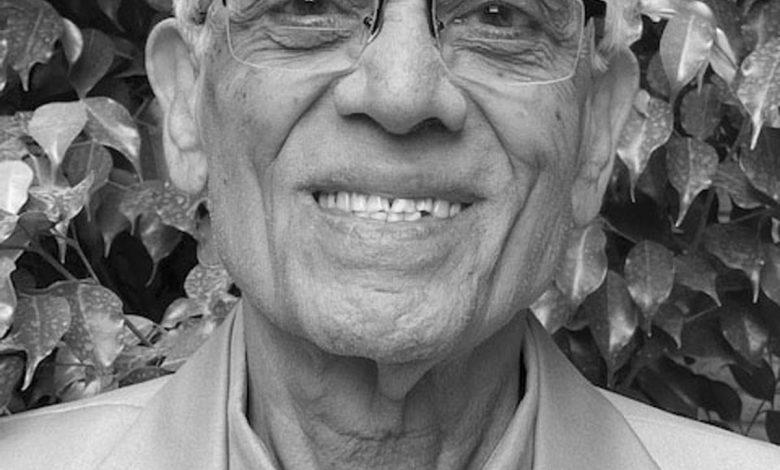GUEST COLUMN : Super achievers amongst persons with disability

Friday, 18 March 2022 | Krishan Kalra | Dehradun
The moment I sit down to write about the subject, the first thoughts that come to my mind are the scores of ‘Super Achievers’ – who were supposedly ‘Persons with Disability’. Stevie Wonder, Stephen Hawking, Franklin D Roosevelt, Helen Keeler, Louis Braille are all very famous international names. Each one of them is credited with huge achievements. Closer home, and more recently, we have Arunima Sinha, Ira Singhal, SudhaChandran; once again, household Indian names credited with unprecedented success in their chosen fields. I am sure, there are many more – perhaps even more distinguished – and this list is by no means either exhaustive or in any particular sequence. So, is it really fair to call them ‘persons with disability’? Aren’t they all ‘more able’ than any of us? Anyway, let me come back to this after briefly describing – even though you may have heard and read this before – what these ‘super achievers’ did.
Stevie went blind shortly after birth and yet trained himself to be one of the greatest singers the world has seen. Hawking contracted motor neuron disease at the age of 21, was given just two years to live and went on to become one of the most distinguished professors at Cambridge, renowned physicist and cosmologist, and brilliant author of immortal books like ‘A Brief History of Time’. Helen Keller was struck with some mysterious disease – when she wasn’t even two years old – that made her deaf and blind; she ended up as a charismatic motivational speaker, author and advocate for PwDs. FDR, that great American President (1933 – 45) was paralysed at the age of 39, probably due to polio. And Louis Braille, blinded in both eyes due to an accident in early childhood, developed – at the tender age of 15 – the revolutionary Braille system of reading for those with totally impaired vision – that has stood the test of time for nearly two centuries and is still the bedrock of learning for the sightless.
In our own country – where unfortunately the support system is nowhere near that in the west – Arunima, pushed off a running train by ruffians, saved by villagers, amputee with a prosthetic foot, climbed the Everest; Ira qualified for the IAS in 2010, was denied the job due to her disability –height just 4 feet 5 inches – took the government to court against this unfair treatment, meantime worked briefly in the IRS, got herself an MBA degree, worked with Pepsi for some time, kept clearing the IAS exam repeatedly in 2011 and 2013, finally won her long legal battle and also topped in the IAS in 2014 and is today a role model for many aspirants. Sudha Chandran lost one leg due to gangrene following a road accident and went on to become a famous dancer and actor.
How did they all do it? Were they really ‘disabled’ or was it the system that labelled them so? Why didn’t they just give in, sit comfortably at home or at the mercy of some philanthropist? What was it that separated them from the millions of others who ‘accept their fate’ or who do not get support from their parents, society and the government? Imponderable questions indeed. And we have some probable answers. First of all they believed in themselves; they dared to dream big, they knew they could do it; made a strong resolve to do so, were fortunate to get all the encouragement from their parents and extended families; they just didn’t give up in the face of tough challenges; they didn’t accept rejections at various points in life, many of them fought for their rights – long before there were any laws to protect them.
We can call them a respectful Divyangs or ‘persons with special abilities’ but the fact remains that they have to face virtually unsurmountable challenges – humiliation, taunts, barbs, lack of physical access to many places, pathetic lack of facilities to educate and train them, generally – barring some very fine exceptions – indifferent attitude of employers and grossly inadequate help from the authorities. Yet, some of them come out on top solely due to their “special abilities” – abilities of hard work, perseverance, greater focus on the task at hand by shutting out all diversions, iron will, fire-in-the-belly to prove themselves and a strong determination to succeed at any cost! They don’t seek sympathy or mercy or charity; they only ask for equal opportunity and inclusivity. Watching some of these young men and women at Sarthak training centres or NAAI competitions is a great feeling and, at the same time, a very humbling experience. It restores one’s faith in the immense capacity of human beings. Watching them at work in enlightened companies like the Lemon Tree Hotels, Café Coffee Day, Aegis, HCL, Make My Trip, Big Bazaar and others is nothing short of an exhilarating experience. Here, they are a supremely confident lot; handling jobs assigned to them at par with – at times even better than – their able bodied colleagues.
Dr Jitender Aggarwal, founder of Sarthak, practicing successful dental surgeon, who lost his central vision in 2008 – at the young age of 36 – is a fine example of how he did not give in; instead he started an organisation that is helping thousands get trained and find suitable jobs and an opportunity to rub shoulders with other able-bodied persons. But, in a country like ours, we need several thousand Sarthaks!
(The author is president of National Abilympic Association of India and member of the advisory board of Sarthak. Views expressed are personal)






